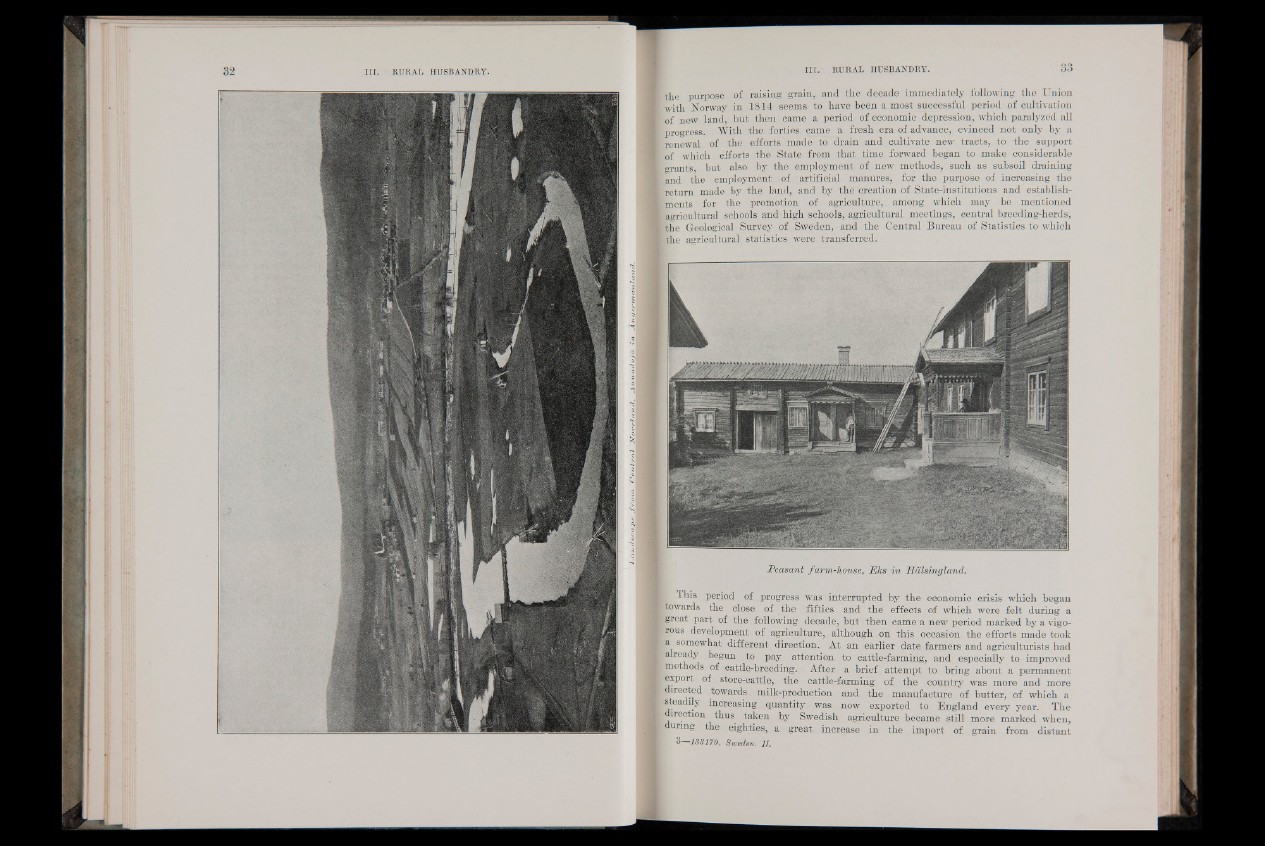
the purpose of raising grain, and the decade immediately following the Union
with Norway in 1814 seems to have been a most successful period of cultivation
of new land, but then came a period of economic depression, which paralyzed all
¡progress. With the forties came a fresh era of advance, evinced not only by a
¡renewal of the efforts made to drain and cultivate new tracts, to the support
of which efforts the State from that time forward began to make considerable
grants but also by the employment of new methods, such as subsoil draining
and the employment of artificial manures, for the purpose of increasing the
return made by the land, and by the creation of State-institutions and establish-
•ments for the promotion of agriculture, among which may be mentioned
¡agricultural schools and high schools, agricultural meetings, central breeding-herds,
the Geological Survey of Sweden, and the Central Bureau of Statistics to which
the agricultural statistics were transferred.
Peasant farm-house, E k s in Hàlsingland.
This period of progress was interrupted by the economic crisis which began
■ ■towards the close of the fifties and the effects of which were felt during a
Igreat part of the following decade, but then came a new period marked by a vigo-
i rous development of agriculture, although on this occasion the efforts made took
a somewhat différent direction. At an earlier date farmers and agriculturists had
■already begun to pay attention to cattle-farming, and especially to improved
: methods of cattle-breeding. After a brief attempt to bring about a permanent
export of store-cattle,. the cattle-farming of the country was more and more
directed towards milk-production and the manufacture of butter, of which a
steadily increasing quantity was now exported to England every year. The
I irection thus taken by Swedish agriculture became still more marked when,
■puring the eighties, a great increase in the import of grain from distant
I 9 133179. Sweden. II.